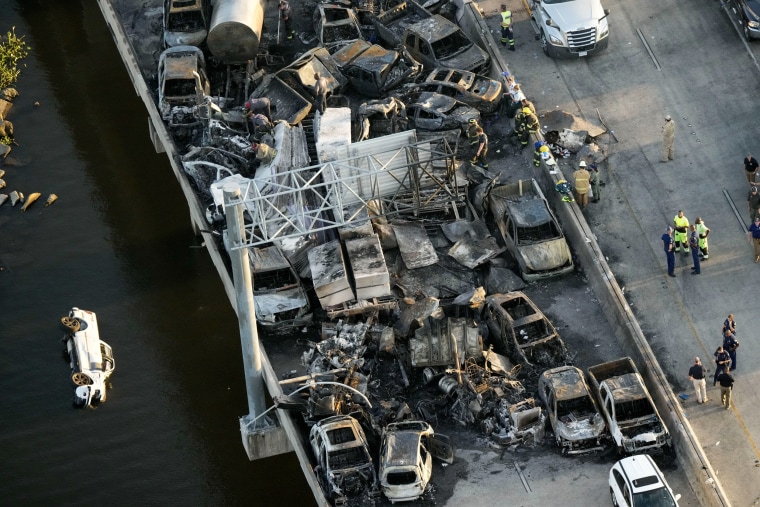A dangerously thick “superfog” that caused a huge vehicle pileup north of New Orleans on Monday was made worse by wildfires burning nearby, according to local officials.
Seven people were killed and more than two dozen others were injured in crashes involving at least 158 vehicles in the northbound and southbound lanes along a stretch of Louisiana’s Interstate 55. An unusually dense layer of fog was partly to blame for the accidents, which left a mileslong trail of crumpled and charred vehicles.
The low-visibility conditions were known as a “superfog,” which forms when moisture in the air mixes with smoke from burning brush, leaves and trees in swampy marshlands.
Superfog can lower visibility to less than 10 feet, with the most severe instances resulting in near-zero visibility, according to the National Weather Service.
“Under light wind conditions, superfog meanders through low terrain areas such as creek beds or drainage ditches,” the agency said, adding that the thick fog can be very dangerous when it settles over highways.
The superfog in Louisiana was the thickest early Monday and had mostly lifted by that afternoon, though fog advisories remained over a small patch of the state into Tuesday.
Superfog conditions are unusual but do occur periodically in the South, where marsh fires, calm winds and humidity can combine to create thick veils of fog.
Multiple marsh fires have been burning in the area, according to the New Orleans branch of the weather service.
Local officials said Monday that dense fog was “heavily impacting” parts of the interstate and urged people to avoid the area and exercise caution when getting around.
“Do not stop on the road when you encounter near zero visibility as this will cause an accident!” the weather service in New Orleans said. “Instead pull off to the shoulder or take the nearest exit to surface streets if you are on the interstate and are uncomfortable driving in the dense fog.”
Though they both reduce visibility, a superfog is different from smog, which occurs when air pollution interacts with fog to create hazy conditions that can cause serious health problems.
Most of Louisiana remains in the grips of extreme drought, making marsh fires more frequent and thus increasing the chances of developing superfog conditions.


